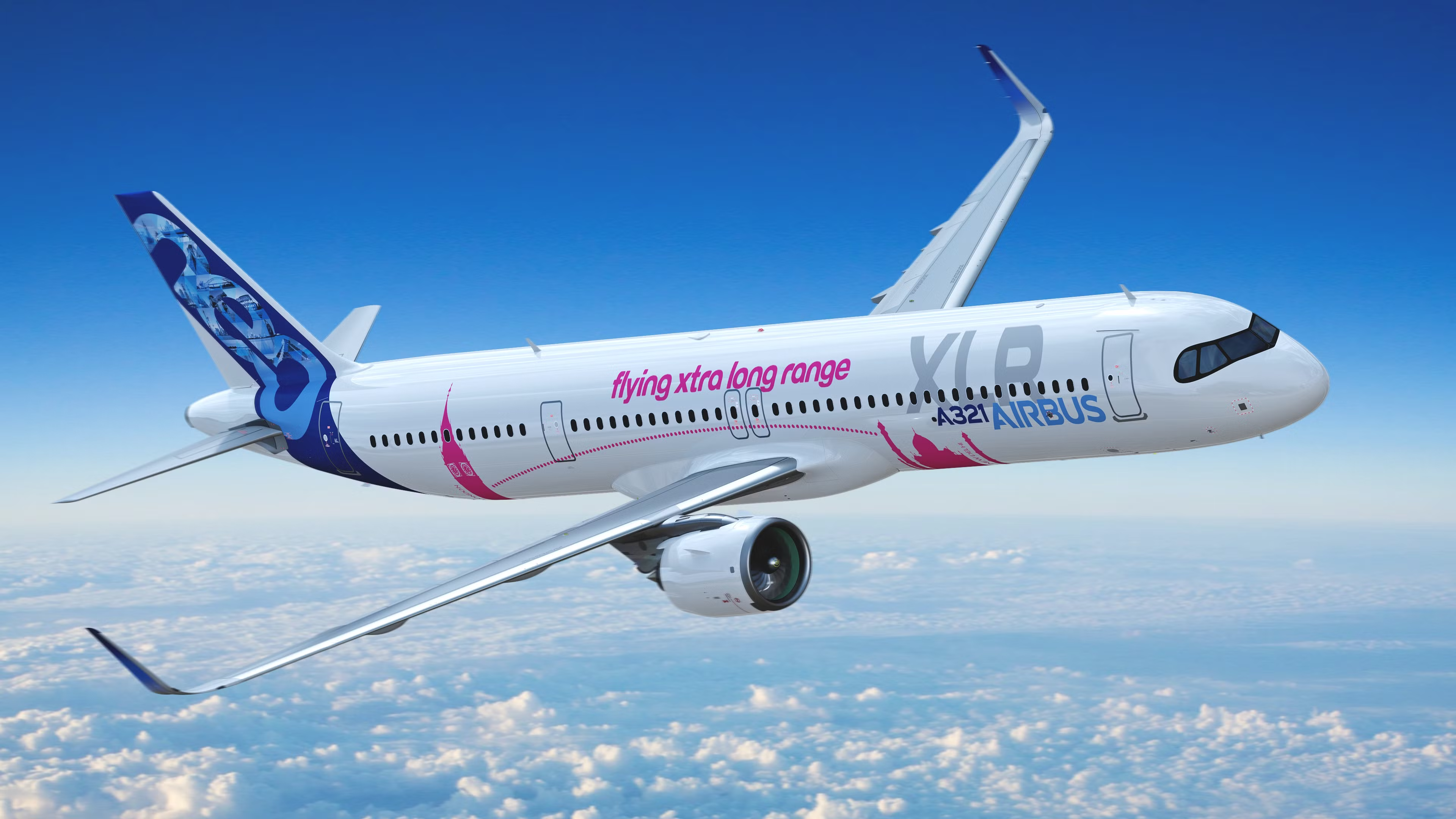
The Airbus A321XLR (Extra Long Range) is the latest and longest-range variant of the A321neo family, designed to revolutionize long-haul narrow-body operations. Here’s a detailed breakdown of its key features, specifications, and competitive advantages:
1. Overview
- Program Launch: Announced at the 2019 Paris Air Show, entering service in 2024 (delayed from 2023 due to certification refinements).
- Purpose: Bridges the gap between narrow-body efficiency and long-haul range, enabling airlines to operate transatlantic and other long routes profitably with lower capacity than wide-body jets.
- Base Model: Derived from the A321neo (New Engine Option), with structural and fuel system modifications for extended range.
2. Key Enhancements & Design Features
a. Increased Range
- Range: 4,700 nautical miles (8,700 km) – about 700 nm more than the A321LR (Long Range).
- Typical Routes:
- New York (JFK) → Rome (FCO)
- London (LHR) → Delhi (DEL)
- Buenos Aires (EZE) → Miami (MIA)
b. Fuel Capacity
- New Rear Center Tank (RCT): A permanent, non-removable auxiliary fuel tank in the rear fuselage (behind the wing) holding 12,900 liters (3,400 gallons) of fuel.
- Total Fuel Capacity: ~32,000 liters (8,500 gallons), up from ~24,000 liters in the A321LR.
- Fuel Efficiency: Uses CFM LEAP-1A or Pratt & Whitney PW1100G-JM engines with ~20% lower fuel burn vs. previous-gen aircraft.
c. Structural Modifications
- Reinforced Landing Gear: Strengthened to handle higher takeoff weights (MTOW increased to 101 metric tons).
- Modified Rear Fuselage: The RCT integration required changes to the airframe’s structure and systems routing.
- Door Layout: Typically configured with four exit doors (instead of over-wing exits) for faster evacuation in high-density layouts.
3. Cabin & Passenger Capacity
- Typical Configurations:
- Two-Class: 180–200 seats (e.g., 20 business + 180 economy).
- High-Density: Up to 244 seats (single-class, used by LCCs).
- Cabin Comfort:
- Airspace Cabin: Modern lighting, larger overhead bins, and quieter engines.
- Narrow-Body Long-Haul: Airlines may offer lie-flat business seats (e.g., JetBlue’s Mint suites).
4. Performance Specifications
- Max Takeoff Weight (MTOW): 101,000 kg (222,666 lbs).
- Max Payload: ~21,000 kg (46,300 lbs).
- Cruise Speed: Mach 0.78 (~828 km/h or 515 mph).
- Takeoff Distance: ~2,100 meters (6,890 ft) at MTOW.
- Service Ceiling: 39,100–41,000 ft.
5. Orders & Market Impact
- Competes Directly With: Boeing’s proposed 737-10 MAX (shorter range) and the out-of-production 757-200.
- Major Customers (as of 2024):
- Indigo Partners (Wizz Air, Frontier, JetSMART) – 182 orders.
- United Airlines – 70 orders.
- American Airlines – 50 orders.
- IAG (Aer Lingus, Iberia) – 36 orders.
- Total Orders: ~550+ (as of mid-2024).
6. Certification & Entry into Service
- Certification: Achieved EASA/FAA certification in 2024 after delays due to fuel tank safety concerns (fire-risk mitigation for the RCT).
- First Delivery: Q2 2024 to Qantas (delayed to late 2024).
- Early Operators: Aer Lingus, Iberia, JetBlue, Wizz Air.
7. Economic Advantages
- Lower Operating Costs: ~30% cost per seat advantage vs. wide-bodies (e.g., Boeing 787) on thinner routes.
- Point-to-Point Routes: Enables non-stop flights between secondary cities (e.g., Edinburgh to Boston).
- Replacement for Aging 757s: Ideal for airlines retiring older, less efficient jets.
8. Challenges & Criticisms
- Payload-Range Tradeoff: At max range, payload may be restricted (e.g., reduced cargo or passengers).
- Regulatory Hurdles: The RCT design required additional fireproofing to meet safety standards.
- Pilot Training: Requires differences training for pilots transitioning from other A320 family jets.
9. Future Outlook
- Market Niche: Expected to dominate the “middle of the market” (MOM) segment.
- Potential Stretch: Airbus studies an A322XLR with further range/payload, but no firm plans yet.
The A321XLR is a game-changer for airlines seeking to open long, thin routes without the cost of wide-bodies, solidifying Airbus’s lead in the long-haul narrow-body market.
Leave a Reply